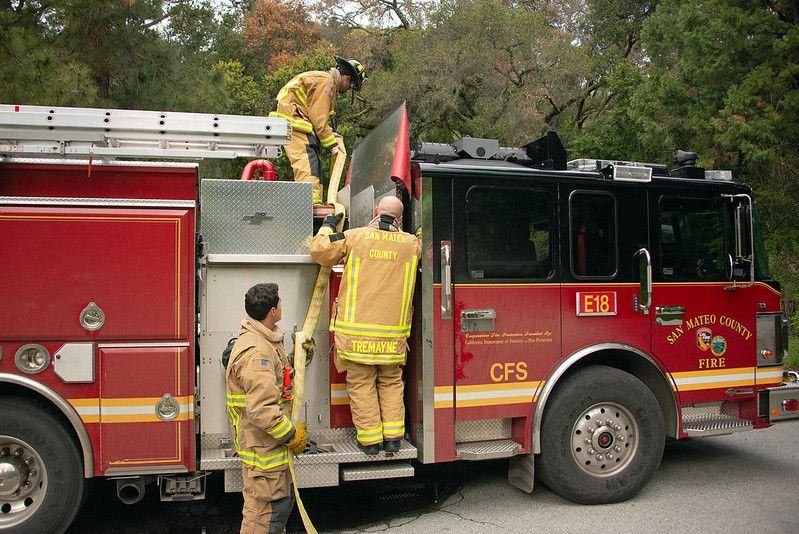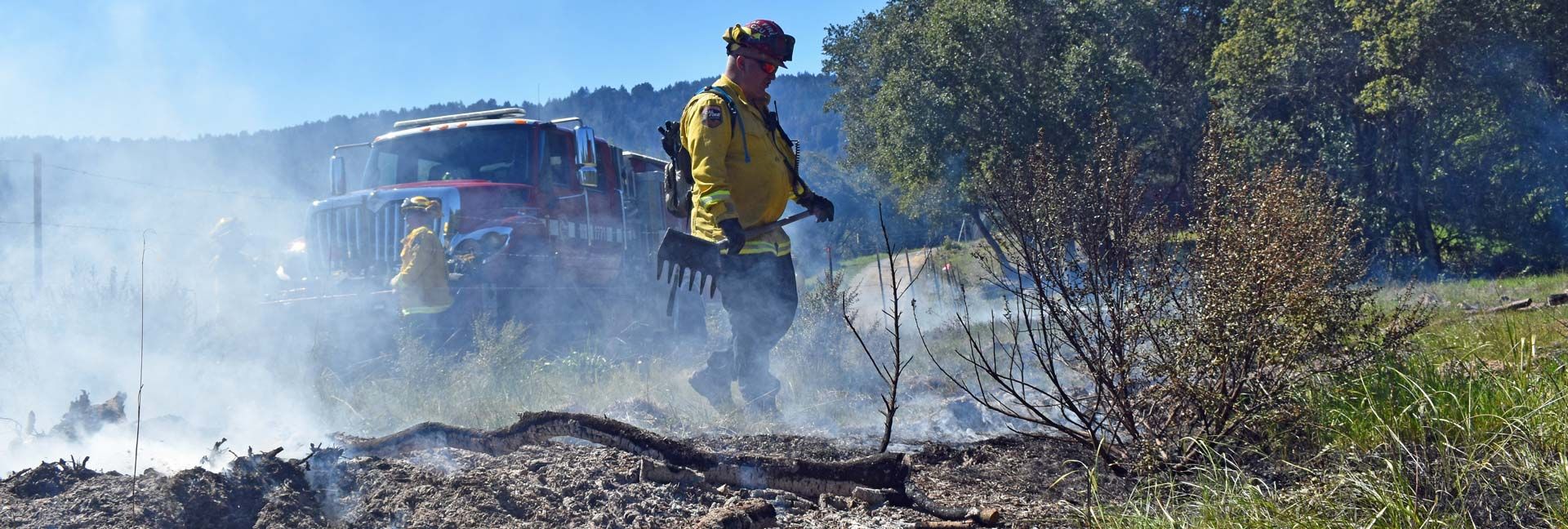
Wildfires
Wildfires
Climate change is expected to increase the frequency, intensity, and duration of wild-fire events impacting San Mateo County. Simulations of large wildfires using statistical models developed for the Fourth California State Climate Assessment show that the probability of a large fire—which burns more than 1,000 acres—in San Mateo County increases rapidly with a warming climate, with an eight-fold increase in the probability of a large wildfire by 2070. Local residents experienced evacuations, transportation disruptions, and heavy smoke as a result of the CZU, Cabrillo fire, and Edgewood fire, among others. With greater vulnerability due to fire damage, some of the burned areas have since been impacted by landslides. Even fires outside San Mateo County, such as the 2017 Napa and Sonoma-based Tubbs, Nuns, Atlas and Pocket fires, have led to significant local wildfire smoke impacts.
Impacts
Impacts from wildfire and wildfire smoke events may include:
- Threats to the safety of those using nearby roadways and railways.
- Diminished air quality hundreds of miles from the burning area which may have wide-ranging health impacts such as from respiratory illnesses.
- Disproportionate impacts to socially vulnerable and low-income communities, which may expose them to greater health and safety risks, costs, and barriers to evacuation.
- Threats to the safety of evacuation routes.

Possible Adaptation Strategies
Improved Emergency Communication
- Install fire detection cameras to assess speed of fire travel and provide a live feed to community members.
- Develop or update a communication plan and warning system that includes multiple or tiered approaches designed to reach diverse population groups and those with language or other access barriers. Include outreach via cellphone, online, social media and radio outlets.
- Establish neighborhood teams and community working groups for public outreach and/or incident response. Work with trusted community organizations and local governments to secure and store emergency supplies, especially in underserved communities.
- Assess skills and resources that can be deployed to support special needs and vulnerabilities at the neighborhood level.
- Increase the strength of the cell network in rural Coastal areas to reduce likelihood of service loss during wildfires.
Improved Evacuation Routes:
- Install signage for “emergency only” evacuation routes and have community evacuation plans and community organization partnerships in place.
- Train Community Emergency Response Teams (CERTs) and other community leaders on protocols and procedures for neighborhood wildfire evacuation, including procedures for persons with disabilities, seniors, and culturally/linguistically competent recruitment and training.
Improved Emergency Shelters:
- Establish temporary refuge areas and emergency shelters. Plan for inclusive and nondiscriminatory practices through training, partnerships with trusted community organizations, and through meeting population specific needs, such as for transgender individuals, undocumented individuals, or individuals with disabilities.
- Develop a short-term shelter and long-term housing strategy for displaced residents and animals, including service animals.
Policy Changes:
- Restrict development in the Wildland-Urban Interface (WUI).
- Improve fire code and building standards for safer buildings and building materials.
- Retrofit key buildings, shelters, and infrastructure to the extent possible.
- Work with insurance companies to co-develop incentives for homeowners to modify buildings with fire-safe materials, for example fire resistant venting for eaves.
Vegetation Management and Defensible Space:
- Reduce vegetation along roadways for critical evacuation routes in high-risk Wildland Urban Interface (WUI) areas.
- Work with the community to manage vegetation and reduce fuel loading.
- Expand residential education, support, and building retrofit programs to promote defensible space and assist members of vulnerable communities to access these programs.

